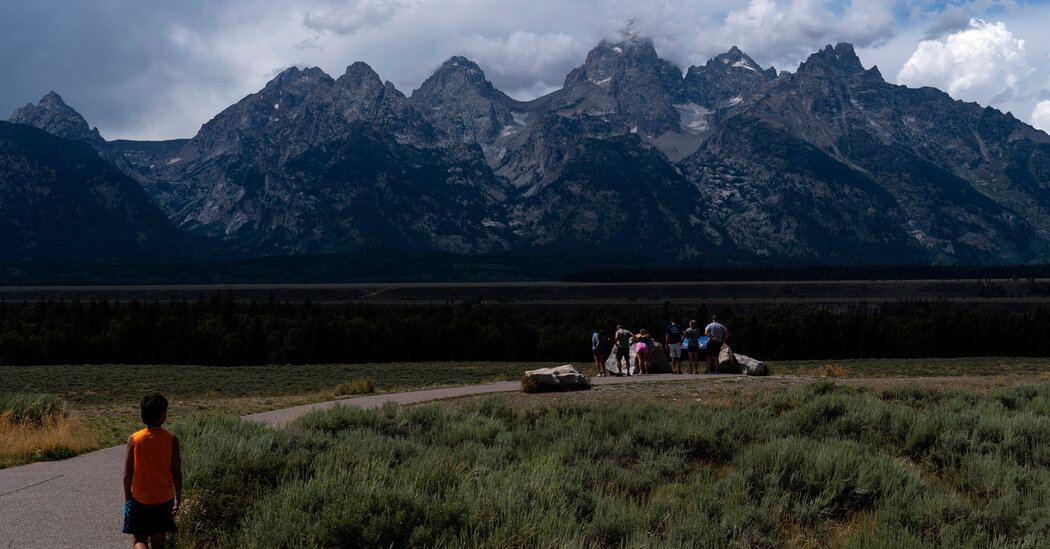Wyoming has agreed to a $100 million deal to turn over a prized parcel of land within the boundaries of Grand Teton National Park, allowing the federal government to protect the plot from the threat of development.
The so-called Kelly parcel had been a subject of negotiations for years, as conservationists hoped to permanently secure the land, which sits in a migration corridor for pronghorn and elk and has a sweeping view of the Teton Range. Wyoming had at one point made plans to sell the one-square-mile property in an auction, potentially to a luxury home developer.
As part of the agreement finalized on Monday, the nonprofit Grand Teton National Park Foundation was able to raise about one-third of the $100 million needed for the deal, officials said, while the remainder came from the federal Land and Water Conservation Fund.
“Today marks an incredible milestone, decades in the making, to permanently protect an essential wildlife migration corridor and treasured landscape within Grand Teton National Park,” Interior Secretary Deb Haaland said in a statement.
The end-of-year deal came together amid high-stakes negotiations and a ticking clock, as the park foundation feared that donors might drop their funding if there were further delays and a bloc of conservative lawmakers, rising to power in the State Legislature, had signaled a desire to scuttle the deal in the legislative session that starts in January. Wyoming had made the agreement contingent on the federal government easing restrictions for development, including oil and gas drilling, on other federal lands managed by the Bureau of Land Management.
Last week, Gov. Mark Gordon, a Republican, had certified that the federal government met the conditions for the agreement, while also saying that he hoped to alter those land-management plans with the incoming Trump administration.
Grand Teton is one of the nation’s most visited national parks, drawing more than 3 million people each year. But it has long struggled to navigate various state and private properties within the boundaries that were established before the park was founded in 1929 and expanded in 1950. The Kelly parcel was the last such state property — and also the most valuable.
Leslie Mattson, president of the Grand Teton National Park Foundation, said the property being preserved was “truly priceless.” The scenery on the land is incredible, she said, but even more important was the effort to preserve wildlife habitat. She said that developing luxury real estate there would have disrupted animal migration in the Greater Yellowstone Ecosystem — celebrated as one of Earth’s few remaining temperate ecosystems that is nearly intact.
“It could have been horrific for the wildlife,” Ms. Mattson said.
The $100 million paid to the state is earmarked to support Wyoming’s education system. State officials said they hoped to do that by initially investing it in land in the Powder River Basin that could be used to bring in revenue from oil and gas development.
